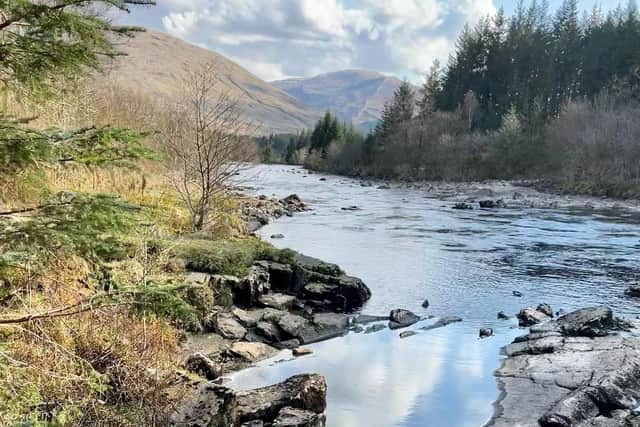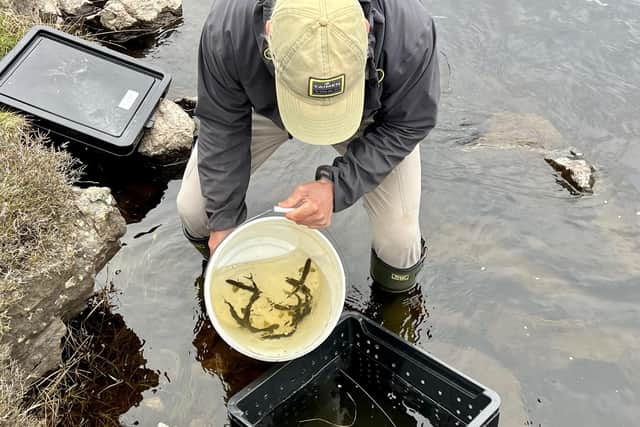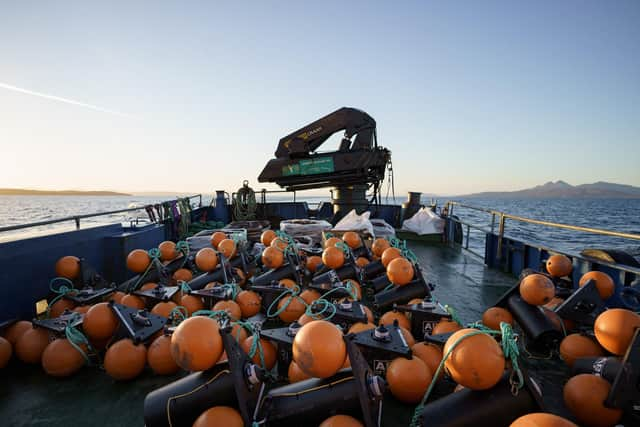Unique tracking study uncovers mysteries of what Scotland's wild salmon get up to once they reach the sea
These are key questions needing answered in the bid to discover why populations of Atlantic salmon are declining and how they can be saved.
Now a ground-breaking new study is following thousands of tagged salmon from rivers on Scotland's west coast to solve some of these mysteries.
Advertisement
Hide AdAdvertisement
Hide AdAnd early results from the West Coast Tracking Project, launched last year, have already revealed some fascinating insights.
The ground-breaking three-year project uses cutting-edge technology to follow young salmon from their home rivers, through Scotland’s coastal waters and out to the continental shelf in the North Atlantic to reach what is known as the ‘smolt highway’ – a route followed by all Atlantic salmon as they make their way to feeding grounds around Norway.
“Salmon are in crisis, there’s no bones about it,” said Mark Bilsby, chief executive of the Atlantic Salmon Trust, a partner in the project.
“In the past 30 years the total population has dropped to a quarter of its 1980 level.
“I don’t think it’s scaremongering to say there’s a fair chance we will lose them from Scotland and the UK in our lifetime if the decline is not reversed.
“Can you imagine Scotland without wild salmon?
“It’s an iconic species and this country would be much poorer in biodiversity terms without them.”
More than 2,300 young salmon – smolts – have already been fitted with electronic tags which emit regular acoustic signals.


These high-frequency ‘pings’ are picked up by a network of more than 200 underwater listening stations, deployed in strategic locations spanning across the west coast of Scotland – including between Skye and Uist.
Advertisement
Hide AdAdvertisement
Hide AdThis allows the movement of each individual fish to be tracked, indicating what happens during their migratory journey and filling in key knowledge gaps about their swimming behaviour and how they use Scotland’s coastal waters.
Early findings show fish do not follow a set path to reach the smolt highway, but travel in all available directions once reaching the sea.
The length of time they spend in particular sea lochs and the overall duration of their journey is also logged.


The ambitious project is a collaboration between members of the Missing Salmon Alliance coalition, Fisheries Management Scotland and the Atlantic Salmon Trust, in partnership with Marine Scotland and with support volunteers across the country.
It comes in addition to the Moray Firth Tracking Project, which aims to discover what is happening to fish on the east coast before they reach the sea.
The results will help provide an evidence base that will help guide policy and planning for future developments in the marine environment, including offshore energy schemes and fish farms.
Salmon rely on cold, clean water to thrive, according to Bilsby, and a number of factors affect their survival - including warming due to climate change, exposure to pests and diseases, pollution and barriers such as weirs and dams.
“There is not one magic silver bullet,” he said.


“Lots of different actions are needed, tailored to particular situations.
“Some rivers are doing well, while others are not.
Advertisement
Hide AdAdvertisement
Hide Ad“But the clear message is that all is not well with our rivers and seas, as wider biodiversity issues show.
“What we do know is that most problems are man-made.
“We have a duty to reverse that damage, but we also need to overcome the apathy and the thought that there are plenty more fish in the sea – there aren’t.
“We must act now if we want salmon to have a future.
“We muck it up at our own peril, as it will come back to haunt us.”
Rural affairs secretary Mairi Gougeon has welcomed the initial results of the initiative, highlighting its importance in increasing understanding of salmon migration routes.
She said: “The revival of salmon populations and the habitats they depend on will provide multiple benefits to society and the rural economy.
“While we take a suite of measures across Scotland that are tackling the twin crises of climate change and biodiversity loss, we continue to argue for greater collective action across the international arena that will reverse the decline of this iconic species.”
Comments
Want to join the conversation? Please or to comment on this article.
